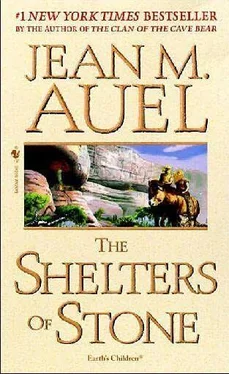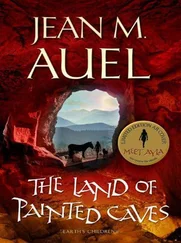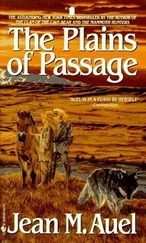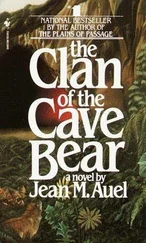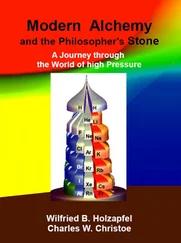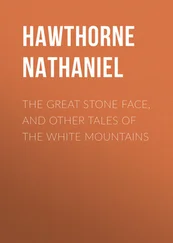I am deeply grateful to another French archeologist, Dr. Jean Clottes, whom I met through his colleague, Dr. Rigaud. In Montignac, at the celebration for the fiftieth anniversary of the discovery of Lascaux Cave, he was kind enough to translate for me in quiet tones the gist of some of the presentations given in French at the conference that was held in conjunction with the Lascaux event. Over the years since then we have met on both sides of the Atlantic, and I cannot thank him enough for his kindness and exceptional generosity with his time and assistance. He has guided me through many painted and engraved caves, especially in the region near the Pyrenees Mountains. Besides the fabulous caves on Count Begouen's property, I was particularly impressed with Gargas, which has so much more than the handprints for which it is so well known. I also appreciated more than I can say my second visit deep into Niaux Cave with him, which lasted about six hours and was a wonderful revelation partly because by then I had learned much more about the painted caves than I knew the first time. Though these places are not yet included in the story, the many discussions with him about concepts and ideas, especially regarding the reasons that the Cro Magnons may have had for decorating their caves and living sites, have been enlightening.
I made my first visit to the cave of Niaux in the foothills of the Pyrenees in 1982, for which I must thank Dr. Jean-Michel Belamy. I was indelibly impressed with Niaux, the animals painted on the walls of the Black Salon, the children's footprints, the beautifully painted horses deep inside the extensive cavern beyond the small lake, and much more. I was moved beyond words, for Dr. Belamy's more recent gift of the exceptional first edition of the first book about the cave of Niaux.
I feel gratitude beyond measure to Count Robert Begouen, who has protected and preserved the remarkable caves on his land, L'Enlene, Tuc d'Audoubert, and Trois Freres, and established a unique museum for the artifacts that have been so carefully excavated from them. I was overwhelmed with the two caves I saw, and am deeply grateful to him, and Dr. Clottes, for guiding my visits.
I also want to thank Dr. David Lewis-Williams, a gentle man with strong convictions, whose work with the Bushmen in Africa and the remarkable rock paintings of their ancestors has engendered profound and fascinating ideas and several books, one co-written with Dr. Clottes, The Shamans of Prehistory, which suggests that the ancient French cave painters may have had similar reasons for decorating the rock walls of their caves.
Thanks are also owed to Dr. Roy Larick for his helpfulness and especially for unlocking the protective metal door and showing me the beautiful horse head carved in deep relief on the wall in the lower cave at Commarque.
I am also grateful to Dr. Paul Bahn for helping me to understand some of the conference presentations at the Lascaux anniversary meeting by translating them for me. Through his efforts, I had the honor of meeting three of the men who as boys discovered the beautiful cave of Lascaux in the 1940's. The site brought me to tears when I saw its white walls filled with such remarkable polychrome paintings, I can only imagine the impression it must have made on the four boys who followed a dog into a hole and saw the cave for the first time since its entrance collapsed 15,000 years ago. Dr. Bahn has been of great assistance to me, both through discussions and his series of novels.
I feel great warmth and gratitude to Dr. Jan Jelinek for continued discussions about the Upper Paleolithic Era. His insights about the people who lived during the time when anatomically modern humans arrived and settled in Europe and met the Neanderthals who were living there are always valuable. I also want to thank him for his assistance to the Czech publishers in their translations of the previous books about the intriguing prehistoric era that are the subject of this series of novels.
I read the books of Dr. Alexander Marshack, who pioneered the technique of examining carved artifacts under a microscope, long before I met him and I appreciate the efforts he has made into the understanding of Cro Magnons and Neanderthals, and the papers he sends me. I have been impressed with his cogent and thoughtful theories based on his careful studies, and continue to read his work for his penetrating and intelligent perceptions about the people who lived during the last Ice Age.
During the three months I lived near Les Eyzies de Tayac in southwest France doing research for this book, I visited Font-de-Guame Cave many times. I owe special thanks to Paulette Daubisse, who was the director and in charge of the people who guided the visitors to that beautifully painted ancient cave, for her kindness, and particularly for giving me a special private tour. She lived with that very singular site for many years, and knew it as though it were her own home. She showed me many formations and paintings that are not usually presented to the casual visitor – it would make the tours far too long – and I am more grateful than she can know for the unique insights that were revealed.
I also want to thank M. Renaud Bombard of Presse de la Cite, my French publisher, for his willingness to help me find whatever I needed, whenever I was in France doing research. Whether it was a place to make copies of a large manuscript not too far from where I was staying with someone there who could speak English so I could explain what I needed, or a good hotel in the region during the off-season when most hotels were closed, or a fabulous restaurant in the Loire valley where we could celebrate the anniversary of dear friends, or late reservations in a popular resort area on the Mediterranean which happened to be on the way to a site I wanted to see. Whatever it was, M. Bombard always managed to make it happen, and I am truly grateful.
In order to write this book, I had to learn about more than archeology and paleoanthropology and there are several other people who were of great assistance. A sincere thank-you to Dr. Ronald Naito, doctor of internal medicine in Portland, Oregon, and my personal physician for many years, who was willing to call me after his office hours and answer my questions about the symptoms and progression of certain illnesses and injuries. I also want to thank Dr. Brett Bolhofner, doctor of orthopaedic medicine in St. Petersburg, Florida, for his information about bone trauma and injuries, but even more for putting my son's shattered hip and pelvis back together after his automobile accident. Thanks also to Joseph J. Pica, orthopaedic surgery and trauma, and physician assistant to Dr. Bolhofner, for his cogent explanation of internal injuries, and his excellent care of my son. I also appreciated the discussion with Rick Frye, volunteer emergency paramedic in Washington State, about what to do first in medical emergencies.
Thanks also to Dr. John Kallas, Portland, Oregon, expert in the collection of wild foods, who continually experiments with processing and cooking them, for sharing his extensive knowledge not only of wild plant foods, but also of clams, mussels and vegetables from the sea. I had no idea there were so many different kinds of edible seaweed.
And special thanks to Lenette Stroebel of Prineville, Oregon, who has been breeding back from wild horses to the original Tarpan, and turning up some interesting characteristics. For example, they have hooves so hard they don't need horseshoes even on rocky ground, they have a stand-up mane, and they have markings similar to the horses painted on some cave walls, such as the dark legs and tail, and sometimes stripes on the flanks. And they have a beautiful gray color called gruya. She not only allowed me to see the horses, but she told me a great deal about them, and then sent a wonderful series of photographs of one of her mares giving birth, which gave me the basis for the birth of Whinney's foal.
Читать дальше
